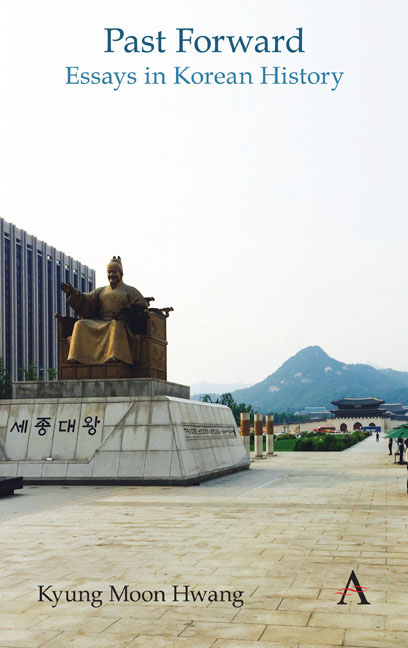Book contents
- Frontmatter
- Contents
- List of Figures
- Foreword
- Chronologies of Korean History
- Themes
- Acknowledgments
- Note on Romanization and Spelling
- Part I Circulating History
- Part II Durable Traditions
- Part III Ancient Remains
- Part IV Dynastic Depths
- Part V Modern Origins
- Part VI Challenges of Nationhood
- Part VII History Makers
- Part VIII External Presences
- Part IX Trials of Modernization
- 62 Summer Symmetries
- 63 The Korean War as a Turning Point
- 64 The Students of April
- 65 The Four Ds of South Korean History
- 66 Two Assassinations
- 67 Roads to Revolution
- 68 Dramatizations of the Gwangju Uprising
- 69 The Great Labor Uprising of 1987
- Part X Gripped by the Past
- Index
66 - Two Assassinations
from Part IX - Trials of Modernization
- Frontmatter
- Contents
- List of Figures
- Foreword
- Chronologies of Korean History
- Themes
- Acknowledgments
- Note on Romanization and Spelling
- Part I Circulating History
- Part II Durable Traditions
- Part III Ancient Remains
- Part IV Dynastic Depths
- Part V Modern Origins
- Part VI Challenges of Nationhood
- Part VII History Makers
- Part VIII External Presences
- Part IX Trials of Modernization
- 62 Summer Symmetries
- 63 The Korean War as a Turning Point
- 64 The Students of April
- 65 The Four Ds of South Korean History
- 66 Two Assassinations
- 67 Roads to Revolution
- 68 Dramatizations of the Gwangju Uprising
- 69 The Great Labor Uprising of 1987
- Part X Gripped by the Past
- Index
Summary
Probably the most remarkable coincidence in Korean history involved a pair of momentous assassinations: of Ito Hirobumi on October 26, 1909, and of Park Chung-Hee exactly seventy years later. The compelling connections between the two figures, however, go beyond the parallels in their deaths.
One could make a convincing argument that Ito was the most influential person, for good or bad, in Japan's rise as a major power in the early twentieth century. From a rather modest background as a lower status samurai in western Japan, he played an instrumental role in modernizing his homeland after the overthrow of the shogun's rule in 1868. He visited Western countries on multiple occasions and helped incorporate ideas and models from the outside world into Japan's political system, including its constitution. And in 1885, he became Japan's first prime minister, a title he would hold on several other occasions, and thereafter remained at the center of his country's emergence as Asia's most economically and militarily advanced country.
Ito's association with Korea resulted from Japan's growth into an imperialist power with designs on neighboring territories, especially Korea. It was for the purpose of dominating Korea that Japan successfully waged wars, in and around the peninsula, against China and Russia at the turn of the twentieth century. It was also for this purpose that, following Japan's defeat of Russia in 1905, Korea was forced into status as a protectorate, with the Japanese taking control of the Korean government's financial and foreign affairs. This was how Ito came to Korea, as the first commander, or Resident-General, of the Japanese protectorate government. Through this position Ito pushed through many changes and led the gradual strengthening of Japan's grip over the peninsula, even forcing a change in the Korean monarchy in 1907.
Though he was assassinated a few months after he left this post in 1909, many Koreans still regarded him as the prime instigator of the Japanese takeover. His assassin, An Jung-geun, gunned him down at a train platform in Manchuria, and this likely accelerated Japan's annexation of Korea, which occurred in the summer of 1910.
- Type
- Chapter
- Information
- Past ForwardEssays in Korean History, pp. 191 - 192Publisher: Anthem PressPrint publication year: 2019



